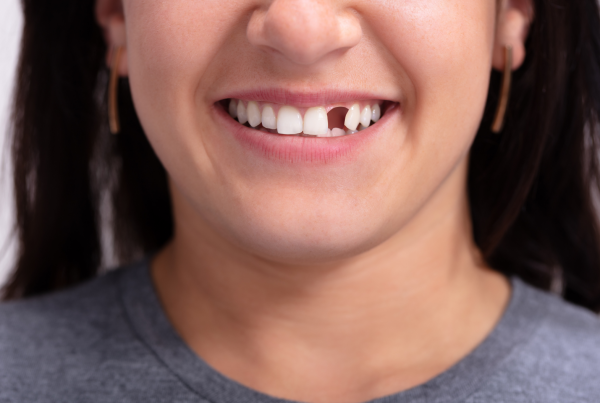Here at Tsawwassen Place Dental Clinic, we often use crowns, inlays and onlays to restore teeth and each option is used slightly differently. Here is some information to help you understand the difference between these low-cost restorative treatments.
What are Dental Crowns and when are they used?
Most people are familiar with the concept of a crown that may also be called a cap as it completely covers up a tooth. Dr. Larry Leslie will suggest this option if you come to see us with a tooth that is particularly badly damaged and where much of its original structure has been lost. This might be the case if you had tooth decay or root canal treatment, or if a tooth took a particularly bad knock. By covering up the entire tooth right down to the gum line, we can provide maximum protection for it, as the crown will completely seal your tooth, preventing bacteria from causing any more decay and infection. Crowns are made to closely replicate the natural shape of a tooth, restoring your smile and your ability to eat and talk with complete confidence.
What are Inlays and Onlays and when are they used?
Inlays and onlays are a far more conservative treatment than a crown and are used to treat areas of decay and damage in the chewing surfaces of back teeth. We are likely to suggest this option if you have a large cavity in a back tooth and where using a normal filling would not be strong enough. With a dental crown, we will need to carefully reshape all the tooth surfaces to create sufficient room for the crown to cover up the tooth without it feeling too bulky or unnatural. If you have an inlay or onlay then far more of your natural tooth structure is preserved as we will only need to remove the damaged portion of the tooth in preparation for this restoration.
An inlay is used to restore the very central part of the chewing surface of a back tooth, but an onlay is slightly larger. You will need an onlay if you have damaged one or more of your tooth cusps which are the raised points on a back tooth. Your onlay will mend the chewing surface of the tooth as well as any cusps that have been damaged. Sometimes an onlay is referred to as being a three-quarter crown as although it will cover up quite a bit of your natural tooth, some of the tooth will still be left exposed.
Materials used to make your Crown, Inlay or Onlay
We frequently make crowns using a precious metal alloy substructure that is covered up with lifelike porcelain, but for a front tooth we may suggest an all-ceramic crown as this will provide the very best aesthetic results. If you have a very heavy bite, we might recommend using a gold crown to protect a back tooth. This is because gold is softer than porcelain and will be kinder to your opposing teeth. Our inlays and onlays are made from porcelain and are strong, hard wearing and resistant to staining.
* Source: Delta Dental insurance http://oralhealth.deltadental.com/adult/procedures/22,HD50





